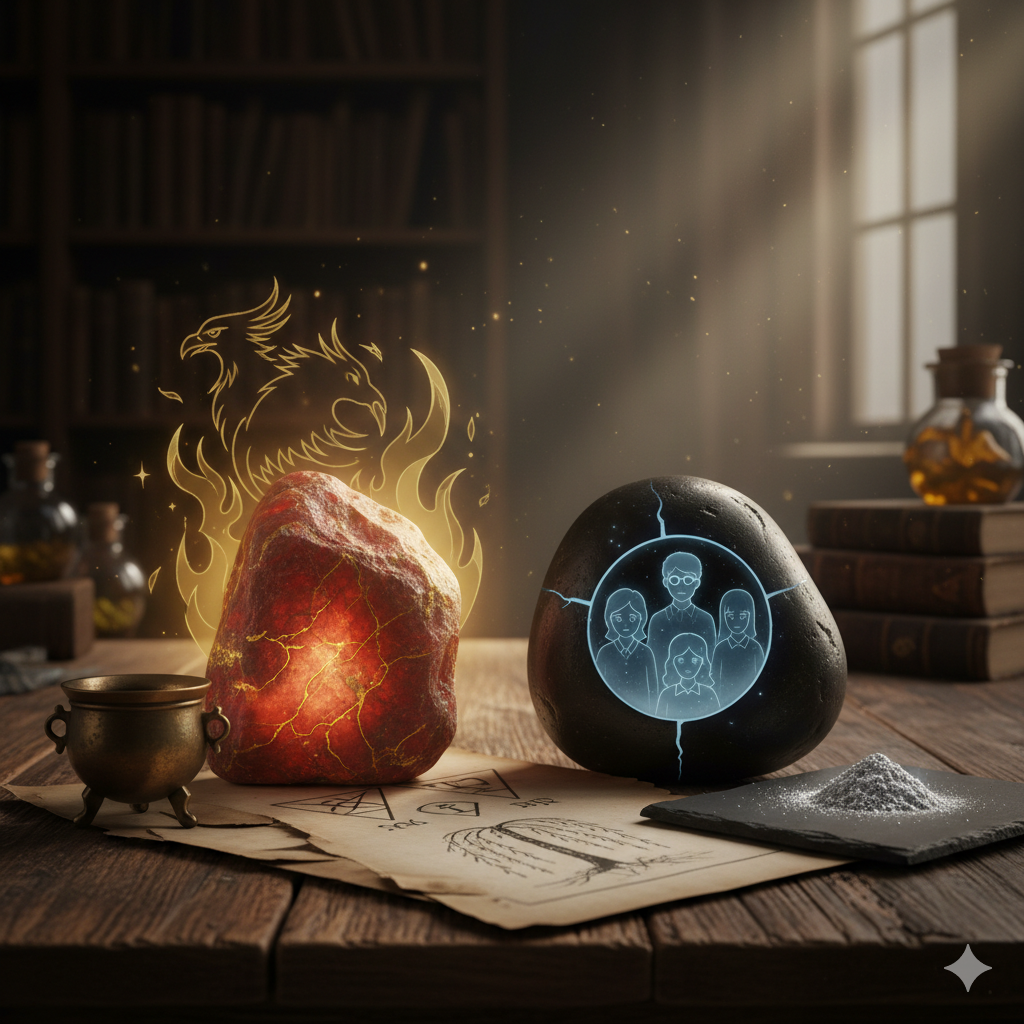Both the Philosopher’s Stone and the Resurrection Stone from the Harry Potter universe carry far deeper meanings than their magical appearances suggest.
Each stone is an allegory — one for transcendence, the other for acceptance — together forming a mirror to the human soul’s eternal struggle between mastery and surrender.
🜍 The Philosopher’s Stone — The Alchemy of Transformation
In alchemy, the Philosopher’s Stone was believed to turn base metals into gold and grant immortality.
But beneath the myth lies a spiritual truth: the transmutation of the self.
- Base metal → Gold: The transformation of the ordinary human soul into an awakened, purified consciousness.
The lead of ego, ignorance, and fear becomes the gold of clarity, compassion, and wisdom. - Elixir of Life: The inner vitality that arises when one discovers the deathless essence within — not literal immortality, but the awareness of eternity through presence.
To seek the Philosopher’s Stone is not to chase endless life, but to awaken to the life that never ends.
It is the pursuit of inner alchemy — the refining of the self through suffering, love, and awareness until all impurities burn away.
“The gold was never in the crucible, but in the heart that dared to endure the fire.”
⚰️ The Resurrection Stone — The Longing for Reunion
The Resurrection Stone, one of the Deathly Hallows, offers the power to bring back the dead.
Yet the souls it calls forth are cold reflections — echoes of memory, not life itself.
This is no gift of resurrection, but a lesson in attachment.
The Resurrection Stone symbolizes:
- The refusal to let go, the desire to reverse loss rather than accept it.
- The temptation to live in the past, to clutch what time has already transformed.
- The grief that binds, when love becomes possession.
When Harry uses the stone before his own death, he doesn’t wield it to deny mortality — he uses it to face mortality.
It becomes a companion in courage, a bridge between the living and the loved, reminding him that love outlasts form.
The Resurrection Stone thus speaks to amor fati — the love of fate.
It teaches that acceptance, not defiance, is the true resurrection.
🜂 In Synthesis — The Two Halves of the Quest
The two stones together embody the twin movements of spiritual maturity:
| Stone | Symbolizes | Deeper Allegory |
|---|---|---|
| Philosopher’s Stone | Transformation | The quest to transcend the limits of the self and become whole. |
| Resurrection Stone | Reconciliation | The quest to make peace with loss, death, and the impermanence of all things. |
One says, “Become eternal within yourself.”
The other whispers, “Let go — eternity is already within you.”
✨ Closing Reflection
To hold both stones in the mind is to understand the paradox of human existence:
we strive to transcend life even as we are called to love it, fleeting and fragile as it is.
The alchemist and the mourner are one and the same —
both seeking a way to touch eternity,
one through transformation,
the other through surrender.
The first stone turns life into gold.
The second teaches that even ashes can shine.

Leave a Reply